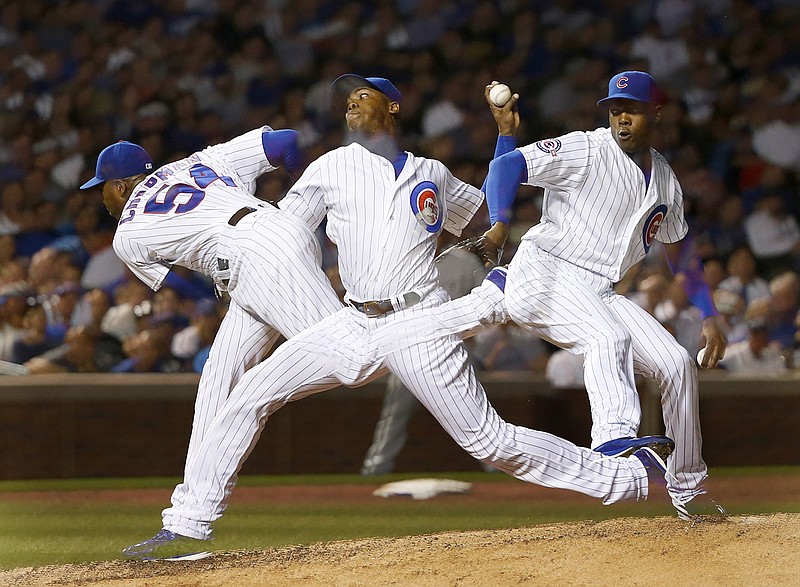There are fastballs and there are faster balls.
Then there are Aroldis Chapman fastballs, considered the Lamborghinis of modern-day pitches. So sleek they are that mlb.com has a "Chapman Filter" on its website to weed out the slower pokes who can't compete with Chapman's speed.
Consider: Of the 702,307 pitches thrown in major league games last season, the Cubs' controversial new closer with the designer arm hogged the top 77 spots for fastest thrown.
Seventy-seven.
The average velocity of his fastball hovers a smidge under 100 mph. He's hit major league-record 105.1 on the radar gun more than once. He's a math problem in a baseball uniform-for hitters and catchers alike.
For example, his 105.1-mph pitches traveled at 154.15 feet per second. With 60 feet, 6 inches separating the pitching rubber from home plate, a batter has 0.392 seconds to react. Factor in that Chapman's release point hovers around seven feet closer than that, and the perceived speed to the batter and the catcher goes up, in this case to 105.5 mph, decreasing reaction time even more. "It's definitely different," Cubs shortstop Addison Russell said. "That's a good thing we have him, so we don't have to face him down the line.
"I've seen 100 (mph)-not many times-but you kind of get a general idea. When you add those 5-6 miles per hour ... that's a whole different ballpark. That's an upper-echelon pitcher."
There's no doubt Chapman is that.
Russell, though, owns one of the 19 home runs Chapman has allowed in his seven seasons in the majors. That's out of 1,395 batters faced. No player has hit more than one against him. Russell grinned when he was reminded of that ninth-inning stroke of what he described as luck against his new teammate Aug. 31, 2015, when Chapman was with the Reds. "It was pretty crazy," Russell said. "We were down a pretty good amount (13-5). I think he was trying to get some good feel for his fastball. Just a short sweet swing and caught it on the barrel."
White Sox right fielder Adam Eaton had no such luck against Chapman, striking out in his only at-bat against him. But Eaton, who called Chapman "a special arm," remained steadfast that timing is everything, even if time is in very short supply.
The 28-year-old Chapman attributed his velocity to mechanics. But science hardly can begin to explain how of the 1,158 pitches Chapman threw in 2015, a staggering 453 were at least 100 mph. That almost six times as many as the next-closest pitcher and representative of nearly 50 percent of 100 mph fastballs thrown in baseball all year, according to mlb.com.
Chapman just makes it look that way. Of his 524 pitches this season, 254 have reached 100 mph, more than 48 percent. Braves rookie Mauricio Cabrera's 103.8 mph pitch is the next fastest recorded, and is tied for Chapman's 10th-fastest.
Speed can be difficult to control, though. Chapman's walk rates are proof of that. He's allowed 4.2 per nine innings in his career. Then again, he's allowed just 189 hits in 3511/3 innings. Before his debut with the Cubs on Wednesday during which he struck out two White Sox in one inning, Chapman's career strikeouts-per-nine-innings sat at 15.2. He peaked in 2014 with a 17.7.
But catching him can be tricky. Miguel Montero experienced his first glimpse-if he could see it-of a Chapman fastball when he caught him during the 2014 All-Star game. He said familiarity will make things a bit easier.

